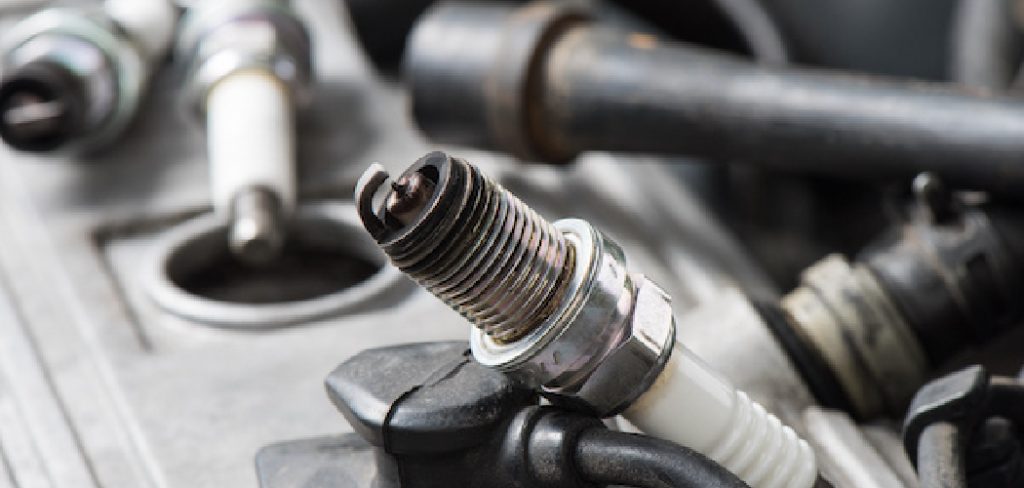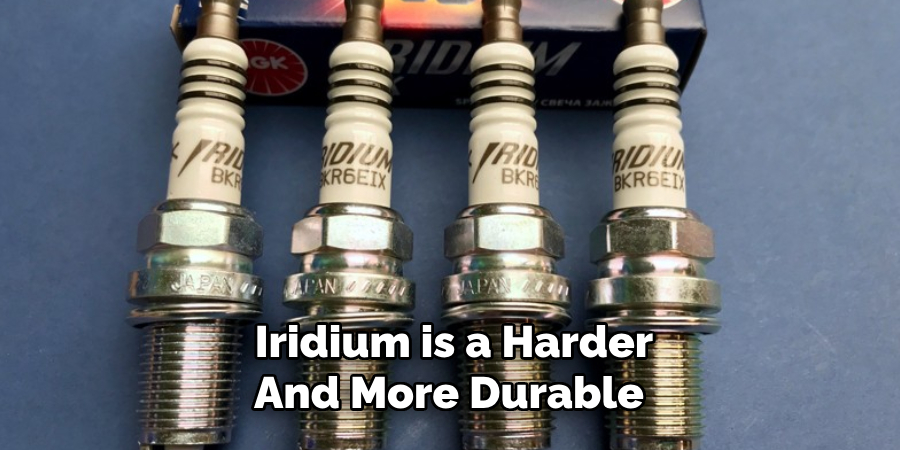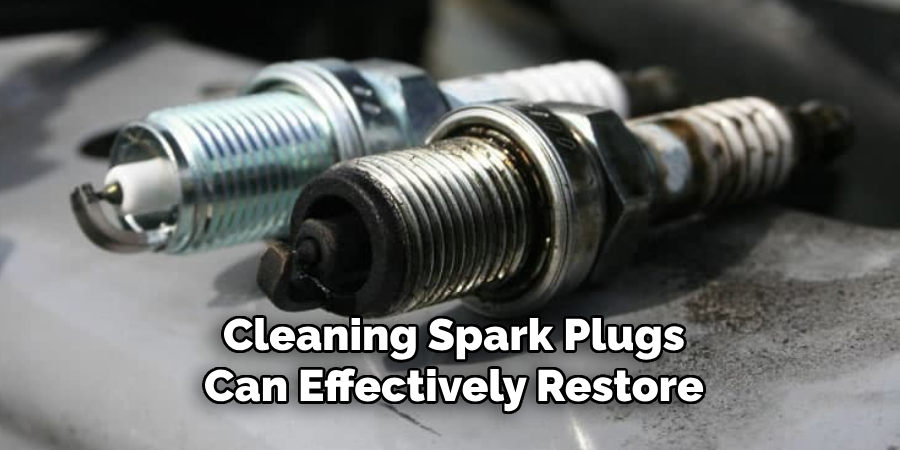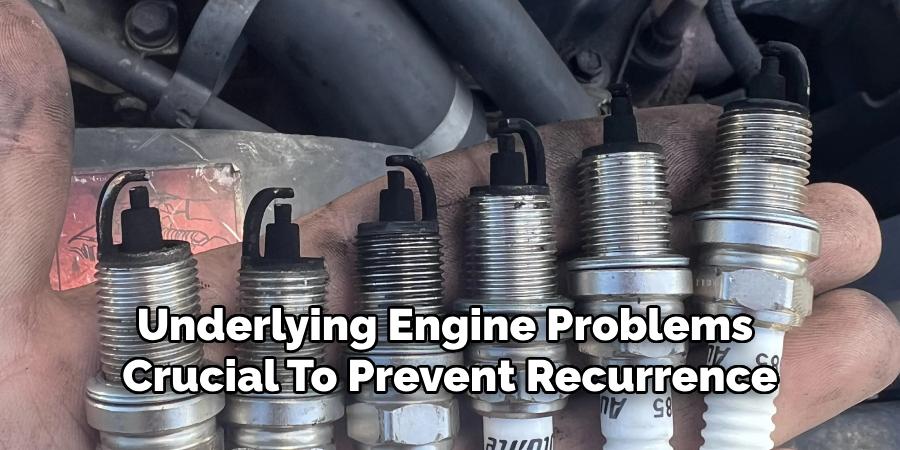Spark plugs play a critical role in engine performance and efficiency by igniting the air-fuel mixture in the combustion chamber, which powers the vehicle. When functioning properly, they help ensure smooth operation and optimal fuel consumption. However, black spark plugs can signify a problem, often indicating a rich fuel mixture, ignition issues, or oil leakage into the combustion chamber.

If left unaddressed, such conditions can lead to a decline in engine performance, reduced fuel efficiency, and potential engine damage. Understanding how to fix black spark plugs is crucial for maintaining vehicle performance. This guide will provide an in-depth look at identifying and resolving the causes of black spark plugs. By troubleshooting these issues and following proper maintenance practices, you can restore optimal engine function and prolong your engine’s lifespan.
Understanding Spark Plug Types and Their Function
What are Spark Plugs?
Spark plugs are essential components in an internal combustion engine. They ignite the air-fuel mixture within the combustion chamber, generating the power necessary to propel the vehicle. Each spark plug features a central electrode, an outer body shell, and an insulator that sparks to ignite the mixture. Properly functioning spark plugs ensure that the engine runs smoothly and efficiently, providing the necessary power and maximizing fuel economy.
Types of Spark Plugs
There are several types of spark plugs available, each with specific advantages and characteristics:
- Copper Spark Plugs: Known for their excellent conductivity, copper spark plugs have a solid copper core with a nickel alloy electrode. They are cost-effective and perform well under extreme conditions. However, they wear out faster than other varieties and may require more frequent replacement.
- Platinum Spark Plugs: Featuring a platinum disc welded onto the central electrode, platinum spark plugs have a longer lifespan compared to their copper counterparts. Platinum’s durability allows these plugs to maintain their effectiveness over extended periods, making them a popular choice for long-term use.
- Iridium Spark Plugs: Iridium is a harder and more durable metal than both copper and platinum, providing increased performance and longevity. Iridium plugs generate a more efficient spark and require less voltage, improving engine performance and fuel efficiency. Their longevity and efficiency make them a preferred choice for modern vehicles.

Signs of a Problem
Identifying signs of black spark plugs is crucial to maintaining engine health. Visually, black spark plugs often exhibit soot accumulation or a carbon-fouled appearance, indicating possible issues such as a rich fuel mixture, oil entering the combustion chamber, or ignition problems. Recognizing these symptoms can prevent more significant engine damage.
Faulty spark plugs might lead to a host of engine performance issues, including rough idling, decreased fuel efficiency, and difficulty starting the engine. Addressing these symptoms promptly is vital to maintaining optimal engine performance and efficiency. Understanding the signs of deteriorating spark plugs can empower vehicle owners to take swift action, preventing potential engine damage and preserving vehicle function.
Common Causes of Black Spark Plugs
Rich Fuel Mixture
One common cause of black spark plugs is an overly rich fuel mixture, with more fuel than air in the combustion chamber. This imbalance leads to incomplete combustion, resulting in carbon buildup on the spark plugs, which gives them a blackened appearance. There are several potential causes for a rich fuel mixture. Faulty fuel injectors, for instance, may dispense too much fuel, preventing it from burning completely.
Similarly, a malfunctioning fuel pressure regulator can lead to excessive fuel being injected into the engine. A clogged air filter can also limit the amount of air entering the engine, compounding the problem of a rich fuel mixture. Addressing these issues promptly is essential to prevent carbon buildup and maintain optimal engine performance.
Oil Leakage
Oil entering the combustion chamber is another significant factor contributing to black spark plugs, often called oil-fouled spark plugs. This can occur when an internal engine oil leak allows oil to coat the spark plugs and combustion chamber, leading to misfires and a decline in engine efficiency.
Common issues that may cause such oil leaks include worn piston rings, which fail to create a proper seal between the combustion chamber and the oil in the engine. Valve seals may also deteriorate over time, enabling oil to seep into areas where combustion occurs. Identifying and repairing these issues promptly is crucial to prevent further engine damage and restore proper spark plug and vehicle function.

Ignition Problems
Weak or inconsistent ignition sparks constitute another cause of black spark plugs. When the ignition system fails to create a strong spark, it can result in incomplete combustion, leaving unburned fuel that forms as carbon deposits on the spark plugs. This failure can stem from several issues within the ignition system. For example, damaged or worn ignition coils might not generate the necessary voltage to create a robust spark.
Additionally, frayed or faulty ignition wires can disrupt the transfer of electric current from the ignition coil to the spark plug.
It is also essential to ensure that all ignition components, including spark plug gaps, are correctly adjusted and functioning. Regular ignition system inspection and maintenance can help prevent these problems, ensuring efficient energy transfer and optimal vehicle performance.
How to Fix Black Spark Plugs: Removing and Inspecting Spark Plugs
Gathering Tools and Equipment
Before removing and inspecting spark plugs, it’s important to gather the necessary tools and equipment. Essential items include a ratchet wrench, spark plug socket, and gap gauge for measuring the spark plug gap accurately. Additional helpful tools may include a spark plug puller, a torque wrench for proper reinstallation, and gloves to protect your hands.
Step-by-Step Removal Process
- Disconnecting the Battery: The first step in spark plug removal is to ensure safety by disconnecting the vehicle’s battery. This precaution prevents electrical shocks and accidental engine starts during the operation.
- Removing Ignition Wires or Coils: Identify and carefully disconnect the ignition wires or coils connected to the spark plugs. It’s critical to handle these components with care to avoid damaging the wires or connectors. Remember their arrangement for accurate reconnection.
- Unscrewing the Spark Plugs Carefully: Using the ratchet wrench and appropriate spark plug socket, unscrew each spark plug with care. Turn counterclockwise and maintain a steady hand to avoid applying excessive force, which might damage the threads or the plug.
Inspecting for Damage
After successfully removing the spark plugs, it’s crucial to inspect each one for signs of wear or damage. Look for cracks in the porcelain insulator, which might indicate overheating or mechanical impact. Examine the electrode for excessive wear or erosion that could affect the plug’s performance.
Abnormal deposits or irregular coloration can signal underlying engine issues, like carbon fouling or oil contamination. Use a gap gauge to measure the gap size, ensuring it aligns with the manufacturer’s specifications. Detecting wear patterns early allows for timely replacement and helps maintain optimal engine performance, ensuring efficient combustion and power delivery.
How to Fix Black Spark Plugs: Cleaning or Replacing Spark Plugs
Cleaning Spark Plugs

Cleaning spark plugs can effectively restore their functionality, provided they are not severely damaged. Begin by carefully removing any accumulated carbon buildup using a wire brush. This will help clear debris from the surface and improve electrical conductivity. For more stubborn deposits, soak the spark plugs in a solvent specifically designed to dissolve such residues.
Allow them to soak for a recommended duration before gently scrubbing with the wire brush once more, ensuring thorough cleaning of all surfaces and crevices. After cleaning, it’s crucial to dry the spark plugs completely to prevent moisture interference with the electrical system. Use compressed air or allow sufficient drying time. Additionally, verify that the spark plug gaps meet the manufacturer’s specifications using a gap gauge. Properly adjusted gaps are vital for efficient ignition and overall engine performance.
When to Replace Spark Plugs
In certain cases, cleaning may not suffice, and replacement becomes necessary. If spark plugs display severe wear, cracks in the insulator, or excessive electrode erosion, replacing them is the optimal choice. Such signs indicate that the plug’s performance has been significantly compromised, affecting engine operation. When selecting new spark plugs, refer to your vehicle’s owner manual or consult a reputable parts supplier to ensure compatibility. Opt for replacements that meet or exceed the original equipment manufacturer’s specifications.
This guarantees reliable performance and longevity. Consider factors such as resistance to fouling, heat range, and the vehicle’s specific application, as the correct spark plug will enhance combustion efficiency and fuel economy. Timely replacement ensures your vehicle runs smoothly and avoids potential drivability issues caused by worn or underperforming spark plugs.
Addressing Underlying Issues

When dealing with blackened spark plugs, underlying engine problems are crucial to prevent recurrence. One common issue is a rich fuel mixture, where the engine receives more fuel than it can efficiently burn. To diagnose this, check fuel system components like fuel injectors and filters.
Ensure that injectors are clean and operating correctly, as clogged or malfunctioning injectors can disrupt fuel distribution. Also, the fuel pressure regulator must be inspected for proper function, as faulty regulators can lead to excessive fuel delivery. Regular maintenance and timely replacement of filters are vital to maintaining clean fuel flow and reducing the likelihood of a rich fuel mixture.
Oil leakage can also lead to fouled spark plugs, often resulting from worn valve seals or damaged piston rings. To diagnose oil leaks, monitor oil levels, and look for visible leaks around the engine. Checking the condition of valve seals and piston rings is essential, although these inspections might require specific tools and expertise. If internal engine repairs seem necessary, it is advisable to consult a professional mechanic to accurately identify and resolve these issues.
Equally important is inspecting ignition system components for wear or malfunction. Start by examining ignition coils and wires for visible damage or age-related wear, which can lead to erratic sparks.
Ensuring proper spark plug gaps is crucial, as incorrect gaps can hinder ignition efficiency. Replace any faulty ignition parts promptly to maintain effective engine performance. Regular inspections of the entire ignition system and ensuring that all components function optimally can prevent future spark plug fouling, ensuring smooth engine operation.
Preventive Maintenance Tips
Regular Inspections
Regular inspections are vital for maintaining the longevity and performance of your vehicle’s engine. As part of good maintenance practices, spark plugs, and other engine components should be routinely inspected and checked for wear and tear. Following a schedule based on your vehicle’s mileage is prudent,
as both the engine’s workload and time can influence component conditions. Refer to the manufacturer’s recommendations for specific intervals, often suggested between 30,000 to 100,000 miles for spark plug inspection. Make this inspection part of a broader preventative check covering the ignition, fuel, and exhaust systems, ensuring all components are in optimal condition.

Using Quality Fuels and Additives
Using high-quality fuels and engine additives can significantly enhance engine performance and minimize the risks of carbon buildup, which can lead to fouled spark plugs. Quality fuels often contain detergents that help keep the engine clean, promoting better combustion and reducing the formation of deposits.
When selecting fuels, adhere to the type and octane rating recommended by the manufacturer to optimize engine function and longevity. Engine additives can further support this process, specifically formulated to clean fuel injectors and improve combustion efficiency. Including these in your maintenance routine can preserve engine cleanliness and enhance overall vehicle performance.
Monitoring Engine Performance
Keeping an eye on engine performance is an effective way to detect potential issues early. Sudden changes in vehicle behavior, such as decreased fuel efficiency, altered acceleration, or unusual noises, can be symptomatic of underlying engine concerns. Pay close attention to dashboard warning lights, which can preemptively indicate issues with the ignition system or other components.
Address these signals promptly by diagnosing and correcting any anomalies, potentially avoiding costly repairs down the line. Regular performance monitoring ensures that your vehicle remains in optimal working condition, providing peace of mind and prolonging the engine’s life.

Conclusion
Addressing black spark plugs is critical for ensuring optimal engine performance and longevity. Recognizing and correcting the underlying causes of fouled plugs, such as a rich fuel mixture or oil leakage, can drastically improve your vehicle’s efficiency and prevent future problems. By understanding how to fix black spark plugs, you empower yourself to maintain a smooth-running engine, mitigating the risks associated with neglect. Regular maintenance, including timely replacements and thorough inspections, is the key to preventing issues that can compromise engine health.
Maintaining clean and well-functioning spark plugs enhances combustion efficiency and supports the broader engine ecosystem. Following proper maintenance practices and conducting regular inspections guarantees that all engine components, especially the spark plugs, are in prime condition. This preventive approach ensures reliable engine performance, improves fuel economy, and extends the life of your vehicle. Ultimately, keeping spark plugs in good condition is a small yet significant step towards sustaining your vehicle’s performance and dependability.
